Although very busy with his work as an animation director on the anime Dragon Quest: The Adventure of Dai, Mr. Kagawa was kind enough to give us some of his time and talk about his career.
Mr. Hisashi Kagawa is part of a group of animators who entered the industry in the mid-80s at Studio Monsieur Onion Productions. Although we barely ever hear its name, Monsieur Onion is a place where many legendary animators and Character Designers were born, such as Mr. Junichi Hayama [1], Mr. Yoshihiko Umakoshi [2], and Mr. Kagawa himself.
Monsieur Onion Production, now Studio Kagura, was a subcontracting studio working predominantly with Toei Animation.
We are happy to bring you this interview, but we can only do so with your help!
Help us finance future interviews by supporting us!
Some fans talk about a lineage emerging from Monsieur Onion that begins with Mr. Masami Suda [3], who trained Mr. Junichi Hayama, going all the way down to Ms. Terumi Nishii [4], who trained under Mr. Kagawa and Mr. Umakoshi at Studio Cockpit [5], and their legacy continues through their trainees such as Ms. Marie Ino [6].
This idea of lineage appears quite apparent, especially when you observe each artists’ illustrations and character designs. They obviously each have their individuality and uniqueness, but you can also feel the shared influences and the heritage passed down from one artist to another.
Interviewing Mr. Kagawa was an excellent opportunity to talk about what was going on at Monsieur Onion at the time, how it influenced his style and career, working on Sailor Moon or more recently on Fresh Pretty Cure! and Tiger Mask W.
“It felt more like a fun training camp than working at a company.”
• You grew up in the Shikoku region, and then you went to study at the Osaka University of Arts. Is there a reason why you went to study there specifically? At the time, you wanted to become a mangaka, is that right?
Hisashi Kagawa: I did not study at the Osaka University of Arts but the Arts College vocational school attached to the Osaka University of Arts for two years.
At first, I considered joining the design department of another university in Kyushu, but I changed my mind for Osaka at the last minute because there was no animation department.
I went to this vocational school, but I was still young and wasn’t serious at the time. I often skipped classes, but I still got my diploma after taking supplementary courses.
I wasn’t sure about what I would do afterward, so I was thinking about becoming an animator or a mangaka, something where I could draw anything as I pleased.
After getting my diploma, I went job hunting. I had an interview with a company to do illustrations for character goods because headhunters for anime companies wouldn’t bother coming to vocational schools. It was the only interview I had in Tokyo, and this is how I ended up at Monsieur Onion Productions.
• How was your introduction to the anime industry? And what was it like at Monsieur Onion? Your first mentor was Mr. Katsunori Kimitsuka [7]. Do you have any anecdotes from your training as an inbetweener?
Hisashi Kagawa: Many people from my generation joined Monsieur Onion at the same time I did. It felt more like a fun training camp than working at a company.
At least it was like that only at the start because it was hard to make ends meet. I had to spend many hours at the studio to complete the work volume and work tirelessly on a vast number of in-between drawings.
The in-between check was also much stricter than today, so I had to worry about quantity and quality.
• How did the situation change once you become a key animator? When you were promoted, your mentor became Hayama Junichi. How much influence did he have over your style? How do you feel your work on Fist of the North Star 2 has impacted your style?
Hisashi Kagawa: While I was still drawing in-betweens to make a living, I started working on key animation, and I felt I could go to the next stage, but I was baffled by the difficulty, which was completely different from in-between drawing. Regarding my work on Fist of the North Star 2, Mr. Hayama was the animation director, and working on the key animation with other young people was as fun as it was painful. But I think it allowed me to study the most fundamental aspects of my style today.
Junichi Hayama was the same age as me and others in our circles, but he entered the industry two years before us. He had already drawn some incredible pictures. I learned a lot from him.
• I remember reading you say that once you became a key animator, you started to have a sense of rivalry. How did it impact your behavior?
Hisashi Kagawa: It wasn’t just me. All my colleagues also had this mindset.
However, since we were all on the same work, I wanted to do more cuts than others or be in charge of good scenes while still keeping a feeling of comradeship. That was the spirit at the time.
Until I became an animation director, I don’t think there was any rivalry with other teams, only between our own group.
• Back then, you really wanted to become an animation director, which will finally happen on Mahô Tsukai Sally 2 [8]. Initially, Mr. Shigeyuki Suga [9] was intended to be the animation director, and he was credited on some episodes before you, but then you took his place. Is there a particular reason why you took the role? And has your previous work on Himitsu no Akko chan 2 [10] been of any help while working on this show?
Hisashi Kagawa: Regarding the change in animation director, to my knowledge, I was chosen because I could make the characters look closer to the source material.
At that time, I still wasn’t confident in my skills at drawing key animation, so I didn’t think I could become an animation director. But since I was given this opportunity, I took it.
I think that the influence of the key animation I drew on Akko-chan can be strongly felt while watching Sally.
• When you become animation director on Sally, I believe that is the moment you become Mr. Umakoshi’s mentor. What impression did you have of him at the time? You also come from the same prefecture. Were there other groups of animators?
Hisashi Kagawa: Since he started drawing in-betweens, Mr. Umakoshi was always in charge of the most challenging cuts. I think he is a very talented animator with strong capacities, and he has always helped me, even as an animation director.
I think there were several groups of animators at Monsieur Onion.
• Around 1990 you left Monsieur Onion Productions, so did a lot of other animators. What were the reasons behind this exodus? Some animators, such as Hayama Junichi, became freelance, but you went to work at Studio Cockpit with Mr. Tatsufumi Tamagawa [11] and Mr. Umakoshi. What motivated this choice?
Hisashi Kagawa: At the time, I worked at Toei Animation under a temporary transfer contract, so I can’t say for sure. But I think it resulted from poor relationships between people at the studio and the overall treatment at the studio.
I was considering going freelance at first, but as I started to think about the others, I decided to go to Studio Cockpit.
“I think Mr. Ikuhara was able to direct one of the most elegant, pointed, mysterious, and exciting works there is through Sailor Moon.”
• After joining Studio Cockpit, you start working on Sailor Moon. I hear Mr. Munehisa Higuchi [12] played a role in your involvement with the show, is that right?
Hisashi Kagawa: Yes, I took part in Sailor Moon after being introduced by Mr. Higuchi. Mr. Higuchi was in charge of production on Sally – not at first but later in the production. He was also in charge of production on Sailor Moon. I think that he was the one to offer me the position on Sally in the first place too.
• When working on Sailor Moon, is it the first time you have worked with Mr. Junichi Sato [13]? What impression did you have of him?
Hisashi Kagawa: Junichi Satô was in charge of storyboards and episode direction for my first participation as animation director on Sailor Moon. I had heard from people around me that he was an impressive person, so I was quite nervous when I first met him.
He was a director, but I learned a lot from him because he drew more than anybody else in the drawing department. He corrected me a lot.
• To go back to this feeling of rivalry we talked about earlier, was it something you still felt while working on Sailor Moon? Many different talented teams were working on it.
Hisashi Kagawa: Sailor Moon was interesting because it was directed and drawn by different persons, each with diverse individualities. I didn’t want to lose to the other teams, so I always wanted to make something good and more interesting.
• Regarding episode 51, you work alongside episode director Kunihiko Ikuhara [14]. What was your impression of him? In that episode, you animated the get-together during the cherry-blossom viewing. What can you tell us about making that scene? The use of very thick lines stands out, I think.
Hisashi Kagawa: I think Mr. Ikuhara was able to direct one of the most elegant, pointed, mysterious, and exciting works there is through Sailor Moon. I remember it was extremely interesting but also difficult as it was a different style from what I was used to.
I took care of the long scene under the cherry blossoms because, as an animation director, I felt it was my duty.
I think that at the time, it felt natural for the animation director to take care of intricate cuts or draw BANK cuts such as transformations.
Mr. Ikuhara specified the thick lines in the storyboard, so I used them.
• In my opinion, before Fresh Pretty Cure! [15], Precure is a series that takes more inspiration from Dragonball than Sailor Moon. Would you agree with that statement? In Fresh Pretty Cure!, the range of facial expressions Mr. Kagawa used in Sailor Moon gets introduced, which helps bring Precure closer to Sailor Moon and a more comedic style.
Hisashi Kagawa: The style of Precure started as girls fighting like Dragonball characters, and this continued throughout Fresh Pretty Cure!. But it also added new elements, reminiscing of Sailor Moon, such as the staff used to purify enemies. I think that I was offered the position because I used to animate on Sailor Moon.
The idea was to increase the heads tall proportions compared to the previous Pretty Cure so that the children of the targetted age would feel as the characters were their older sisters.
I like the comical part of the beginnings of Sailor Moon, so even though the characters’ head tall is high, it made it a shape ideal to add a wide range of expressive gag faces and simplified drawings.
“The original Tiger Mask was very dramatic for its time, I love it.”
• When you were young, an artist you had a lot of respect for was Mr. Kazuo Komatsubara [16]. When you were requested to work on Tiger Mask W, can you tell us about how you tried to pay tribute to artists such as Mr. Komatsubara or Mr. Kimura Keiichiro [17]? What is your relationship to the original Tiger Mask [18] and Tiger Mask Nisei [19] shows?
Hisashi Kagawa: I liked taking part in Tiger Mask W because it wasn’t a remake but a story around the world of Tiger Mask.
I wanted to keep the rough lines and atmosphere of Tiger Mask while showing my own designs. I think we were able to reproduce it closely thanks to the collaboration with the photography team.
The original Tiger Mask was very dramatic for its time, I love it.
I was watching Tiger Mask Nisei as it aired, but most and foremost, I was going crazy for Satoru Sayama’s Tiger Mask [20], who was fighting in the actual New Japan Pro Wrestling ring.
• The fight choreographies in Tiger Mask W are incredible, and the action scenes are breathtaking. Do you have a favorite one? Can you share some of your thoughts and experiences regarding their production?
Hisashi Kagawa: The amount of work on Tiger Mask W was substantial, and I didn’t think I could do it by myself, so I asked Mr. Junichi Hayama to join as an action animation director. Not only that but the show was also carried by young and brilliant animators.
I took part in the scenario meetings several times, so I have a lot of affection for it as well as for the drawings.
I can’t say what episode and what scene exactly it is, but I think the climax episode to the story as well as the last episode of the show are marvelous.
However, so many episodes add up to this conclusion that it’s hard to disregard them. There are some strange stories and some stories I don’t understand, but this variety is what makes TV shows interesting, so please make sure to watch it all.
Interview by Dimitri Seraki.
Translation by Fabrice Renault.
Special thanks to Peter Rong, Avery Hodge, and Matteo Watzky.
We would like to thank Mr. Kagawa for the time he granted us despite his busy schedule.
If you wish to learn more about Mr. Kagawa’s technique, we highly recommend reading his book co-authored with Yoshihiko Umakoshi “Battle Heroine Drawing & Design Techniques“
Like our content? Feel free to support us on Ko-Fi!
Notes
[1] Junichi Hayama (1965 – ). Animator and Character Designer trained at Monsieur Onion Production who got recognized for his work on Fist of the North Star 2. He is considered the disciple of Masami Suda. Now works freelance.
[2] Yoshihiko Umakoshi (1968 – ). Animator and Character Designer trained at Monsieur Onion under Junichi Hayama. He is famous for his character designs on Magical DoReMi and HeartCatch PreCure! His style is heavily influenced by Shingo Araki and Yoshikazu Yasuhiko, which can be seen in the slender shapes of his characters. Founder of Studio Shokaze.
[3]Masami Suda (1943 – 2021). Legendary animator and Character Designer who started his career at Tatsunoko Production and later joined Toei Animation. He is most famous for his contributions to the Science Ninja Team Gatchaman and Fist of the North Star. His way of drawing big, muscular, superheroic men has made him famous.
[4]Terumi Nishii ( ? – ). Animator and Character Designer, she started her career at Studio Cockpit under the tutelage of Mr. Kagawa and Mr. Umakoshi. After going freelance, she joined Studio Shokaze after the production of Mushishi before going freelance again. Her most notorious works are her Character Designs for Mawaru Penguindrum and Jojo’s Bizarre Adventure Diamond is Unbreakable.
[5] Studio Cockpit. Created in 1978 by Hidenori Yamaguchi, a former assistant director at Asahi Film and Studio Eight. A famous subcontracting studio that has strong ties with Toei Animation and OLM.
[6]Marie Ino ( ? – ). Animator and Character Designer who started at Studio Cockpit and later joined Studio Shokaze. She is the disciple of Terumi Nishii. She is most known for her work as Character Designer and animation director on Kirakira Pretty Cure a la Mode.
[7] Katsunori Kimitsuka ( ? – ). Animator and Character Designer affiliated with Monsieur Onion Production. His most notorious works are his contributions as an animation director to Yawara! A Fashionable Judo Girl and Cardcaptor Sakura.
[8] Mahô Tsukai Sally 2 1989 – 1991 Toei Animation, TV Series, dir. Osamu Kasai. This is a sequel to the 1966 anime adaptation of Mitsuteru Yokoyama’s manga Mahô Tsukai Sally. The original manga is considered the origin of the Magical Girl genre.
[9] Shigeyuki Suga (1963 – ). Animator and Character Designer who started his career at Monsieur Onion Production and later joined ACGT. Junichi Hayama and Masahiro Andô heavily influence his style. His most notorious works are his Character Designs for Boogiepop Phantom and Kino’s Journey: The Beautiful World.
[10] Himitsu no Akko-chan 2 1988 – 1989 Toei Animation, TV Series, dir. Hiroki Shibata. A remake of the original Himitsu no Akko-chan series of 1969 with a more cheerful tone. Kodansha requested the show to respond to Shogakukan’s partnership with TV Asahi to adapt Fujio Fujiko’s mangas.
[11] Tatsufumi Itô (Tamagawa) (1964 – 2020). Animator and Director. Before going pro, he started an amateur animation group called Animation Bero Bero, with whom they directed an animation short film featuring Yoshinori Kanada. After joining Monsieur Onion Production, he became close friends with Hisashi Kagawa and Yoshihiko Umakoshi. He is best known as the director of Symphogear.
[12] Munehisa Higuchi ( ? – ) Director of the Digital Imaging Department at Toei Animation. He has been a Production Manager and Producer for many Toei Animation shows, most notably Sailor Moon and Air Gear.
[13] Junichi Satô (1960 – ). Anime Director. He first joined Toei Animation in 1981 after dropping out of University. In 1986 he directed the TV series Maple Town making him the youngest series director in the history of Toei Animation. He is most famous for directing Magical Girl shows such as Sailor Moon or Magical DoReMi and directing the ARIA series. Now affiliated to Twin Engine. He has a regular column featured on Web Animestyle where editor-in-chief Yûichirô Oguro interviews him.
[14] Kunihiko Ikuhara (1964 – ) Famous anime director. He is the disciple of Junichi Satô, under which he worked as an episode director. During Sailor Moon R, he became series director of Sailor Moon. Other notorious works of his are Revolutionary Girl Utena and Mawaru Penguindrum. He is a close friend of Neon Genesis Evangelion director Hideaki Anno.
[15] Fresh Pretty Cure! 2009 – 2010 Toei Animation, TV Series, dir. Junji Shimizu and Akifumi Zako. The 6th installment in the Pretty Cure franchise, a franchise of Magical Girl shows aimed at young girls.
[16] Kazuo Komatsubara (1943 – 2000) Animation director and character designer from studio Oh! Production. One of the most important artists to work for Toei in the 70s. He is especially famous for his work on Devilman, Getter Robo, Galaxy Express 999, and Space Pirate Captain Harlock.
[17] Kimura Keiichiro (1938 – 2018) Animator from Toei Animation & Neo Media, one of the major figures of the gekiga anime movement in the late 60s: on works such as Rainbow Sentai Robin, Tiger Mask, and Lupin III he pioneered a dramatic representation of movement which used dynamic deformations, linework, and complex layouts.
[18] Tiger Mask 1969 – 1971, Toei Animation, TV Series. One of the three great works in the gekiga anime movement and early sports anime, with Star of the Giants (1968) and Ashita no Joe (1970), all of which are adaptations of Ikki Kajiwara’s work. Tiger Mask’s influence can be strongly felt in works such as Akira Toriyama’s Dragonball.
[19] Tiger Mask Nisei 1981 – 1982, Toei Animation, TV Series, dir. Morishita Kôzô. An adaptation of the Tiger Mask II manga, which is a sequel to the original Tiger Mask. The anime and manga had a tie-up with the New Japan Pro-Wrestling league, with Satoru Sayama competing as Tiger Mask and wrestlers such as Antonio Inoki appearing in the anime.
[20] Satoru Sayama (1957 – ). Japanese Pro Wrestler and MMA fighter, nicknamed the “Bruce Lee of wrestling” and known as a pioneer of MMA. From 1981 to 1983, he fights in the New Japan Pro-Wrestling league as Tiger Mask, wearing a costume identical to Tiger Mask Nisei. In 1985 he founded the Shooto Association, which organized some of the first MMA competitions.
Like our content? Feel free to support us on Ko-Fi!
You might also be interested in
Oshi no Ko & (Mis)Communication – Short Interview with Aka Akasaka and Mengo Yokoyari
The Oshi no Ko manga, which recently ended its publication, was created through the association of two successful authors, Aka Akasaka, mangaka of the hit love comedy Kaguya-sama: Love Is War, and Mengo Yokoyari, creator of Scum's Wish. During their visit at the...
Ideon is the Ego’s death – Yoshiyuki Tomino Interview [Niigata International Animation Film Festival 2024]
Yoshiyuki Tomino is, without any doubt, one of the most famous and important directors in anime history. Not just one of the creators of Gundam, he is an incredibly prolific creator whose work impacted both robot anime and science-fiction in general. It was during...
“Film festivals are about meetings and discoveries” – Interview with Tarô Maki, Niigata International Animation Film Festival General Producer
As the representative director of planning company Genco, Tarô Maki has been a major figure in the Japanese animation industry for decades. This is due in no part to his role as a producer on some of anime’s greatest successes, notably in the theaters, with films...
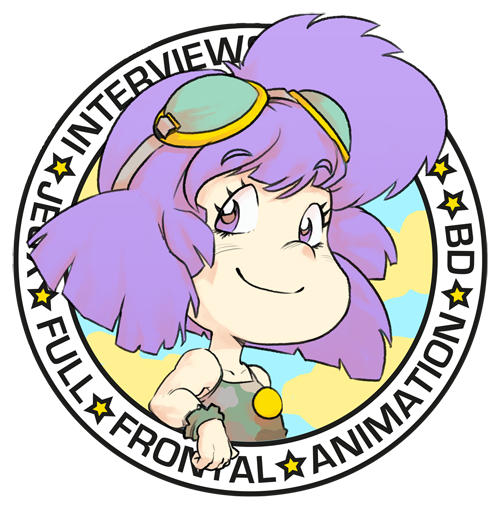
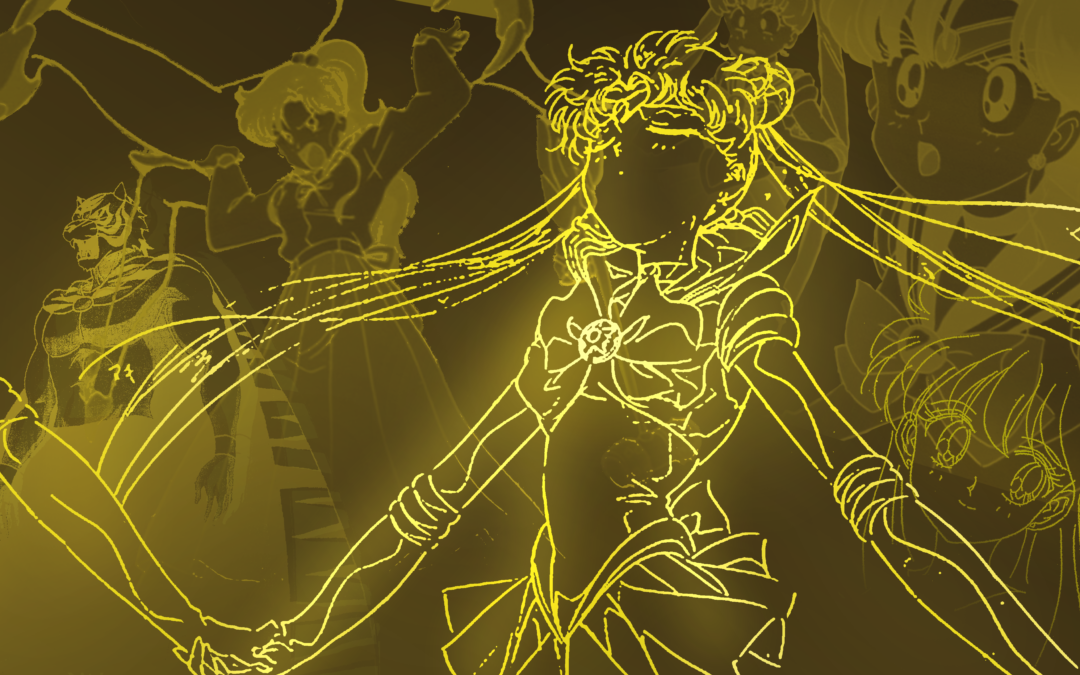
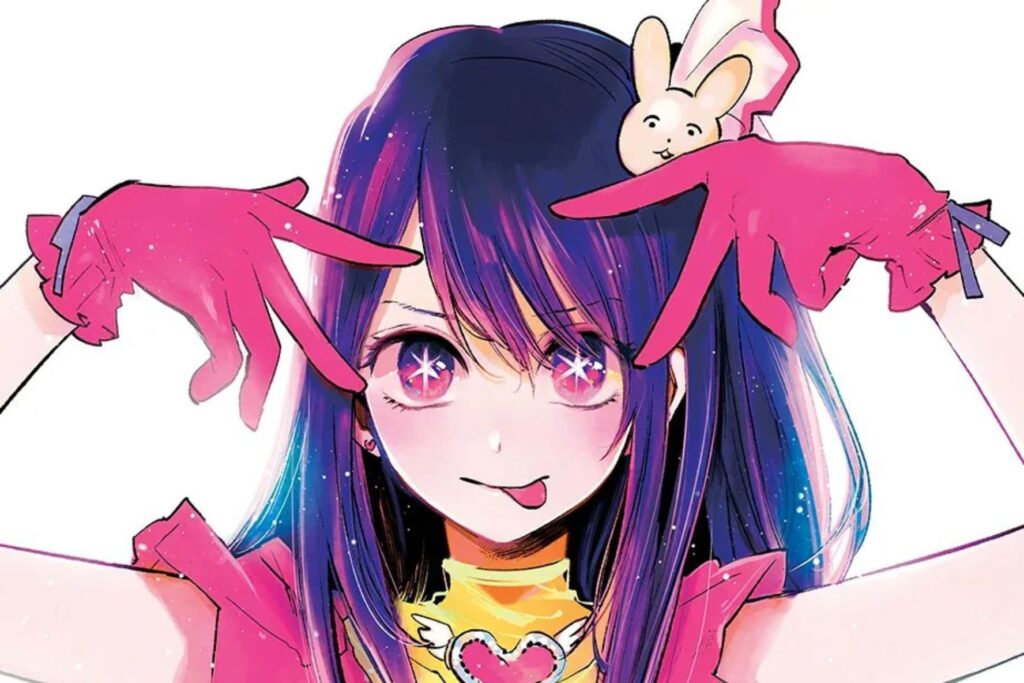
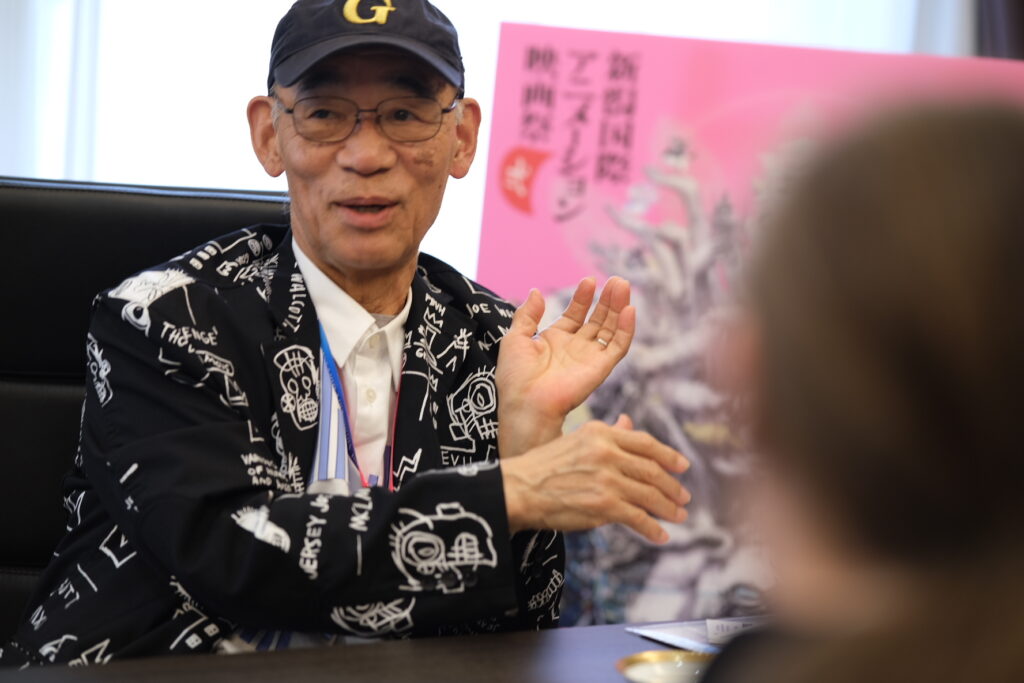
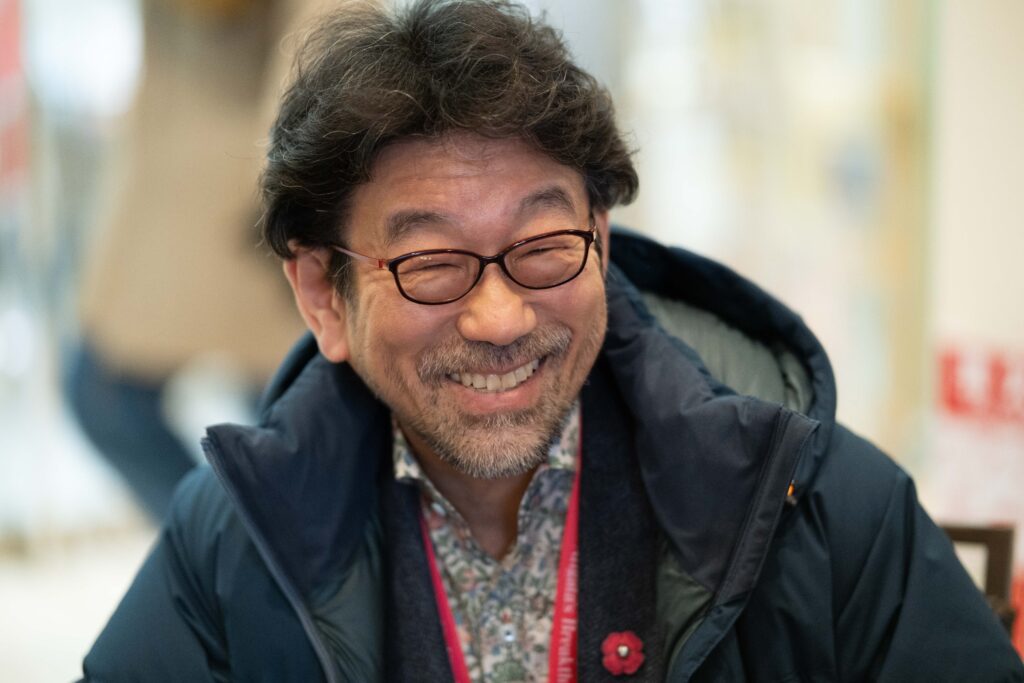
Trackbacks/Pingbacks